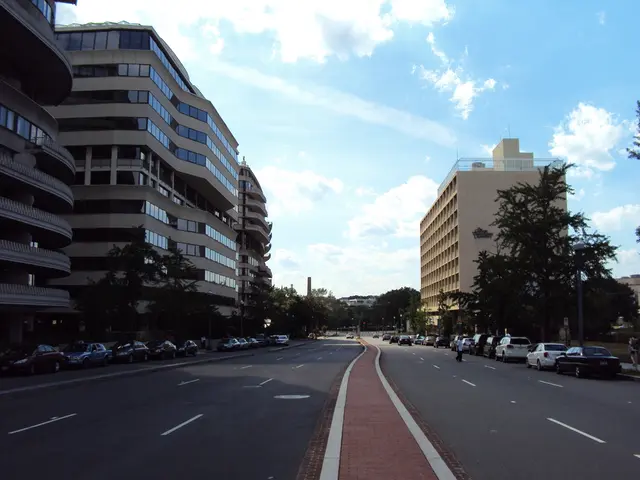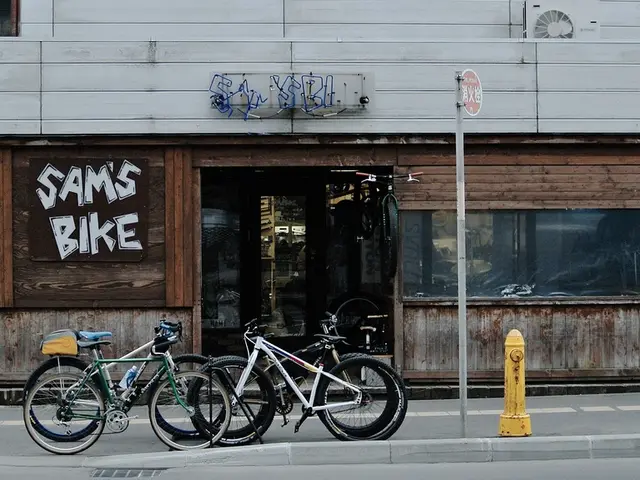Recycled Tires' Transformation Journey - An Inspiring Saga of Repurposed Road Rubber Turning into Household Items
Giving Old Tires a New Life: Transforming Them into Planters
Peru's tire imports have skyrocketed from 55,673 tons in 2014 to 92,659 tons in 2018, according to the Ministry of the Environment (Minam). This surge is largely due to the ceaseless renewal of vehicles, both on and off the road. After their service, these vehicles become classified as Used Tires (UT).
Rather than discarding these tires, many are repurposing them creatively, such as turning them into functional elements for their gardens. But why throw away a tire when you can reuse it?
Beyond the Road: The 'new life' of the tire
Instead of contaminating the environment and posing public health risks by improperly disposing of tires, some people opt to reuse them in innovative ways. When tires are not properly managed, they can become breeding grounds for insects, rodents, and sometimes fire hazards, and these abandoned tires harm the ecosystem and waste valuable resources.
But fear not! If you're tired of tires sitting unattended on the streets, you can easily take advantage of them in numerous ways, giving them a new function that goes beyond their original purpose.
Planting the Seed of Change: Transforming Tires into Planters
To begin, make sure the tire is clean and free of debris. Scrub the surface with water and soap to eliminate any dirt or grease left from its initial use. Once it's clean, you can customize the tire to your liking, depending on your preferred style.
Next, puncture the tire. If you plan to use it as a planter, you'll need to create holes in the bottom to allow water to drain. This crucial step prevents the roots of the plants from rotting due to excess moisture. If you don't have the necessary tools, visit an auto repair shop or nearby hardware store.
After puncturing the tire, it's time to give it a fresh look by applying paint. Synthetic enamels or exterior spray paints work best to add a touch of color. Select vibrant hues or shades that complement the environment of your garden or balcony. Besides making the tire more visually appealing, the paint will also protect the rubber from sun and rain exposure.
Fill the painted tire with soil. Use nutrient-rich soil and, if desired, compost to promote the healthy growth of the plants. If certain plants require specific nutrients, add organic fertilizers to further enhance growth.
Choose the plants you'd like to place in your new planter. In warm climates, succulents, cacti, or flowers tolerant of high temperatures make suitable options. If the climate is cooler, aromatic herbs or low-maintenance plants are excellent alternatives.
Embrace sustainability and join the movement to reuse tires by turning them into planters. By doing so, you'll be reducing waste while adding a unique, eco-friendly touch to your gardens.
community Engagement and Education
Engage with your local community to spread awareness about the importance of tire recycling and sustainable practices. Collaborate with schools to incorporate tire recycling and gardening projects into environmental education programs, teaching younger generations the value of reusing materials rather than throwing them away.
By working together and embracing creative reuse strategies, you, too, can play a significant role in managing and recycling used tires in Peru. Let's pave the way for a greener future!
Additional Insights
Management and recycling of used tires in Peru can be achieved through collection, processing, and creative reuse strategies. Here’s how to focus on turning them into planters for gardening purposes:
- Tire Collection: Organize a collection system where used tires are gathered from automobile repair shops, tire dealerships, and households.
- Cleaning and Preparation: Thoroughly clean tires to remove any debris or chemicals that might leach into the soil.
- Conversion into Planters: Drill drainage holes in the bottom of each tire segment to facilitate proper drainage of water. Decorate and stabilize the tires with gravel or small rocks.
- Adding Soil and Plants: Fill the tires with soil and plant your chosen plants to add a unique touch to gardens while reducing waste.
- Community Involvement: Engage local communities in the recycling and planting process to foster sustainability awareness and encourage community gardening projects.
- Educational Programs: Collaborate with local schools to incorporate tire recycling and gardening into environmental education programs.
By focusing on these steps, Peru can effectively manage used tires, promote sustainable gardening practices, and involve the community in the recycling process.
- In Peru, it's crucial to manage tire waste effectively, as imports have dramatically increased from 2014 to 2018.
- Instead of discarding tires, they can be repurposed creatively, such as transforming them into planters for home and garden.
- By reusing tires in this way, we can reduce waste, prevent public health risks, and protect the environment.
- To make a tire planter, clean the tire, puncture the bottom for drainage, paint it, fill it with soil, and choose plants suitable for the climate.
- Engage the community in Peru by organizing tire collection, collaborating with schools for educational programs, and fostering sustainability awareness.









